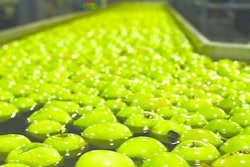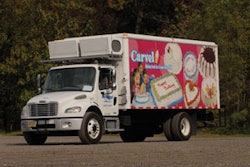The nation's fourth case of bovine spongiform encephalopathy (BSE), more commonly known as "mad cow disease," has been confirmed in a dairy cow in central California, the US Department of Agriculture said Tuesday. BSE is a disease that is fatal to cows and can cause a deadly human brain disease in people who eat tainted meat.
The finding is the first new case of the disease in the U.S. since 2006.
The carcass was at a Baker Commodities Inc. rendering facility in Hanford, CA, according to executive vice president Dennis Luckey. The company renders animal byproducts and had randomly selected the animal for testing last Wednesday, he said.
"We are in the business of removing dead animals from dairies in the Central Valley," he told CNN in a telephone interview. "As part of that program, we participate in the BSE surveillance program."
Public health officials said the risk to public was extremely low.
The samples went to the food safety lab at the University of California, Davis on April 18. By April 19, markers indicated the cow could have BSE, which was sent to the USDA lab in Iowa for further testing.
The carcass was in quarantine Tuesday night. "We're waiting now for USDA to tell us how to dispose of it," Luckey said.
Luckey would not divulge on which farm the animal was found. He said his company tests 1,000 to 2,000 animals a year, which he described as "a small percentage" of the overall number of animals it renders.
Had it been rendered, it could have been turned into an element of a number of products, including chemicals or feed for poultry or livestock, he said. But it would not likely have spread the disease, since USDA regulations prohibit high-risk parts of the cow, such as brains and spinal cords, from entering the food chain.
In people, symptoms of the disease include:
- psychiatric and behavioral changes
- movement deficits
- memory disturbances
- cognitive impairments
According to the agency, BSE can cause infected animals to display:
- nervousness or aggression
- difficulty in coordination and standing up
- decreased milk production
- loss of body weight
It is usually transmitted between cows through the practice of recycling bovine carcasses for meat and bone meal protein, which is fed to other cattle. In this case, the USDA reports that it was a rare form of BSE not likely carried by contaminated feed.
State and federal agriculture officials plan to test other cows that lived in the same feeding herd as the infected bovine, said Michael Marsh, chief executive of Western United Dairymen, who was briefed on the plan. They also plan to test cows born at around the same time the diseased cow was.
"Our members have meticulous records on their animals, so they can tell when the animal was born, the parents, and they can trace other animals to the same facility," Marsh said.
The USDA said it remains confident in the health of the national herd and the safety of beef and dairy products.
The Centers for Disease Control and Prevention reports that the odds of a person contracting mad cow disease, even after consuming contaminated products, are less than one in 10 billion.
California Department of Public Health director and public health officer Dr. Ron Chapman issued a statement Tuesday saying residents do not need to take any specific precautions. Unlike most other meat-borne illnesses, such as those caused by E.-coli bacteria, cooking does not kill the infectious agent that causes BSE.
Consumers who wish to exercise extra caution can follow the advice presented by the Web-based consumer advocacy group Consumeraffairs.com, which advises the avoidance of brains, neck bones and beef cheeks, bone marrow and cuts of beef that are sold on the bone. The group also says to choose boneless cuts of meat and ground beef only if it has been ground in the store.
Source: Associated Press / CNN



















